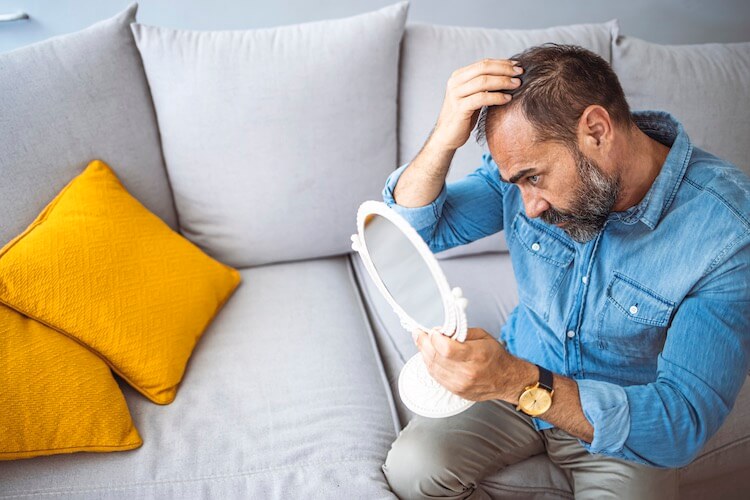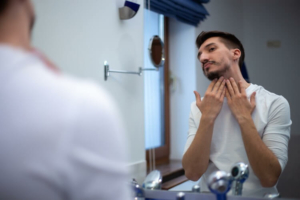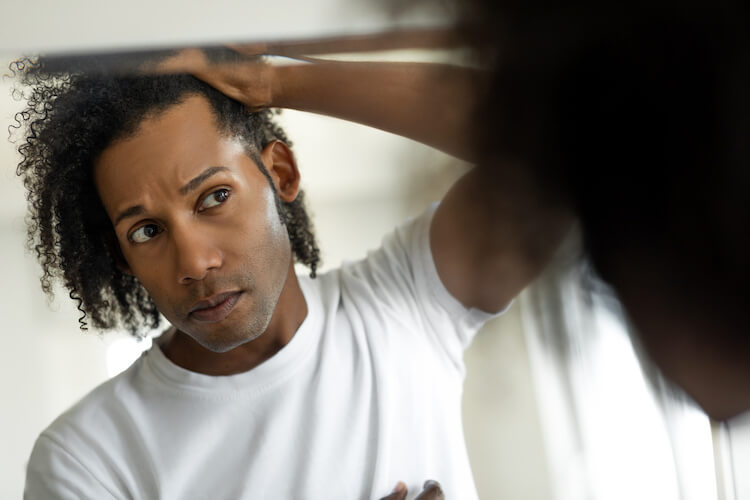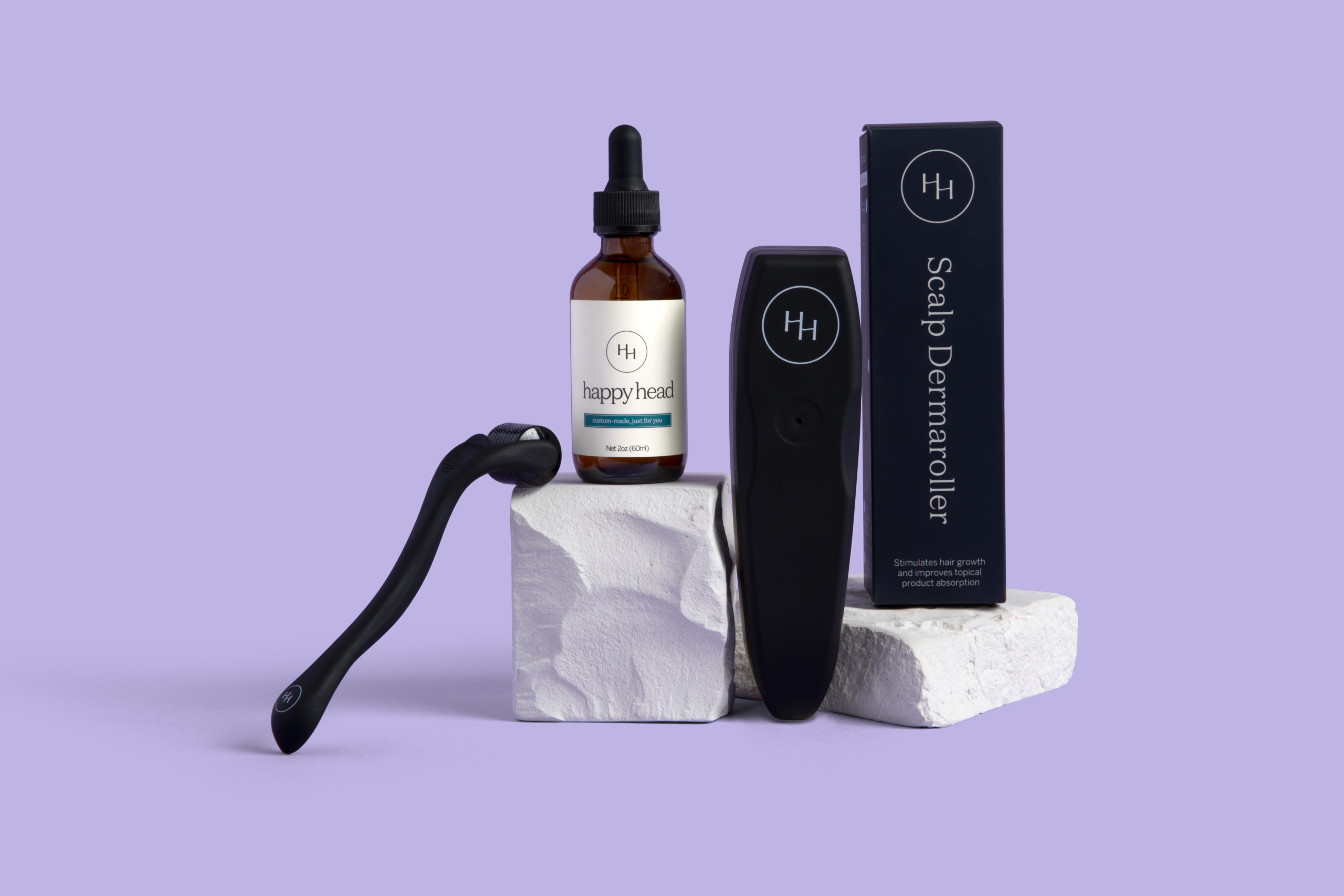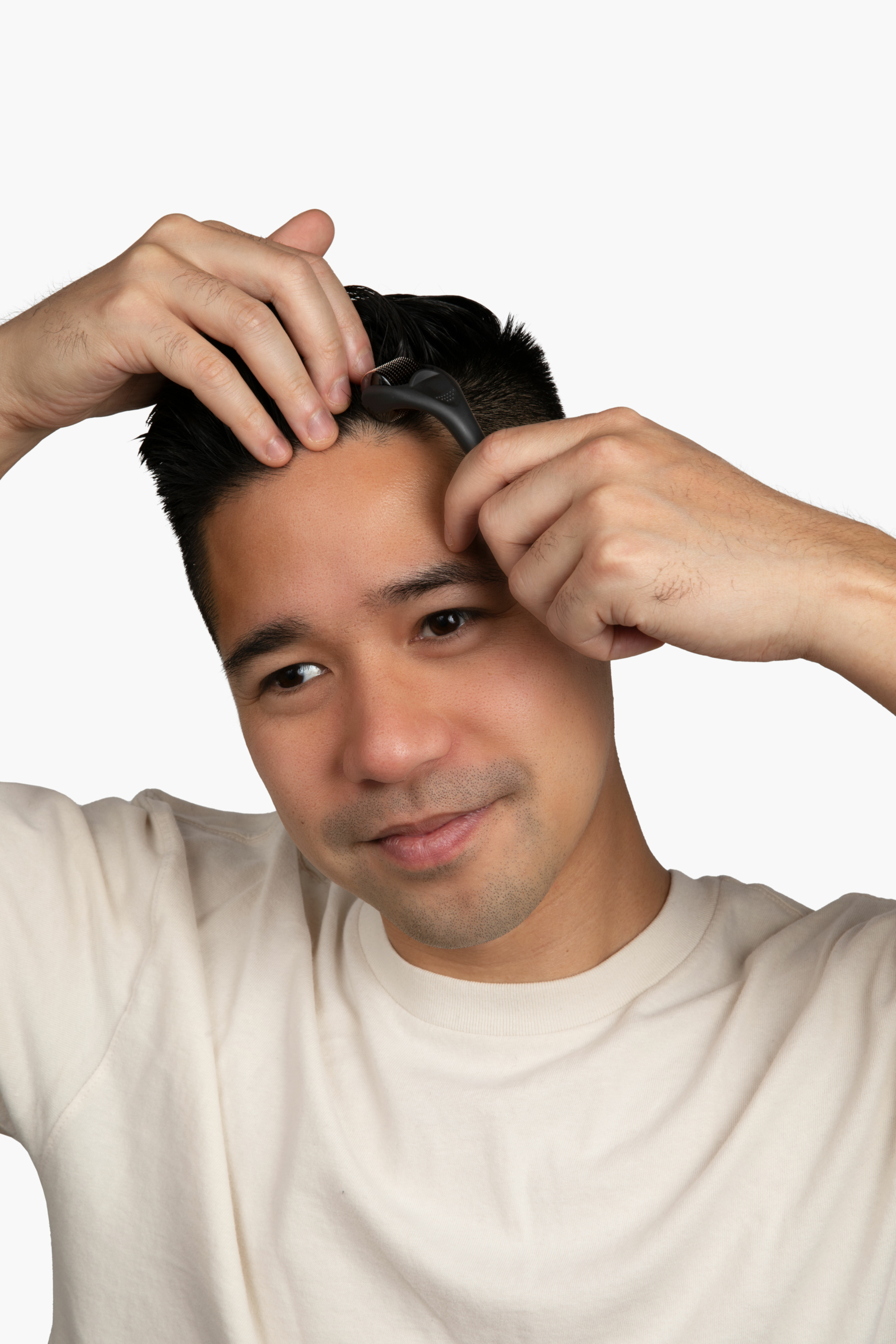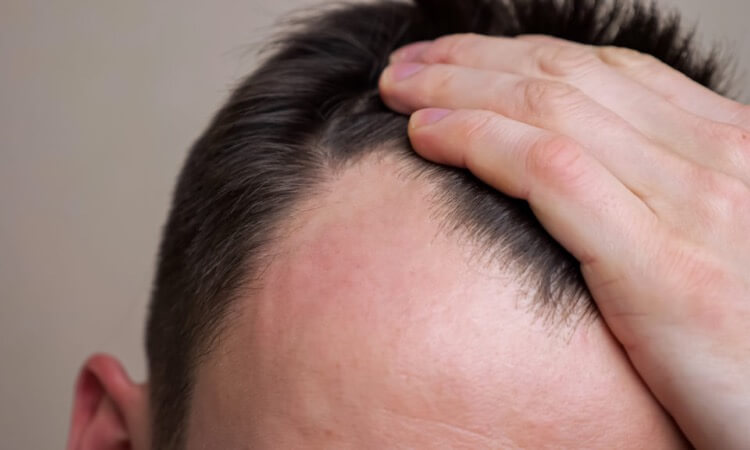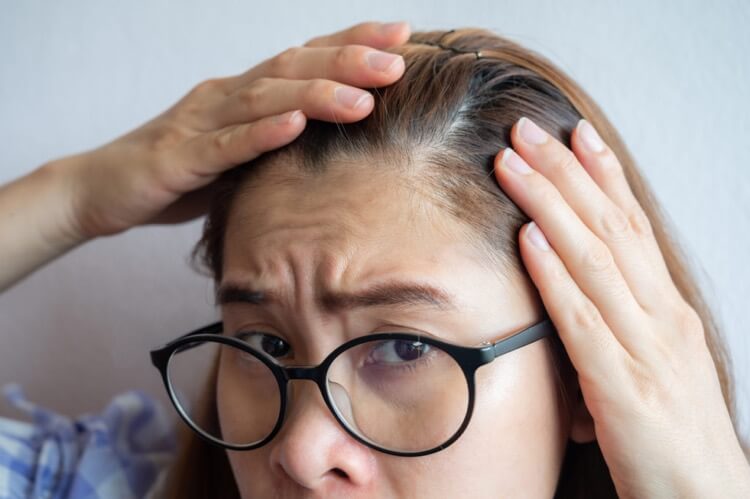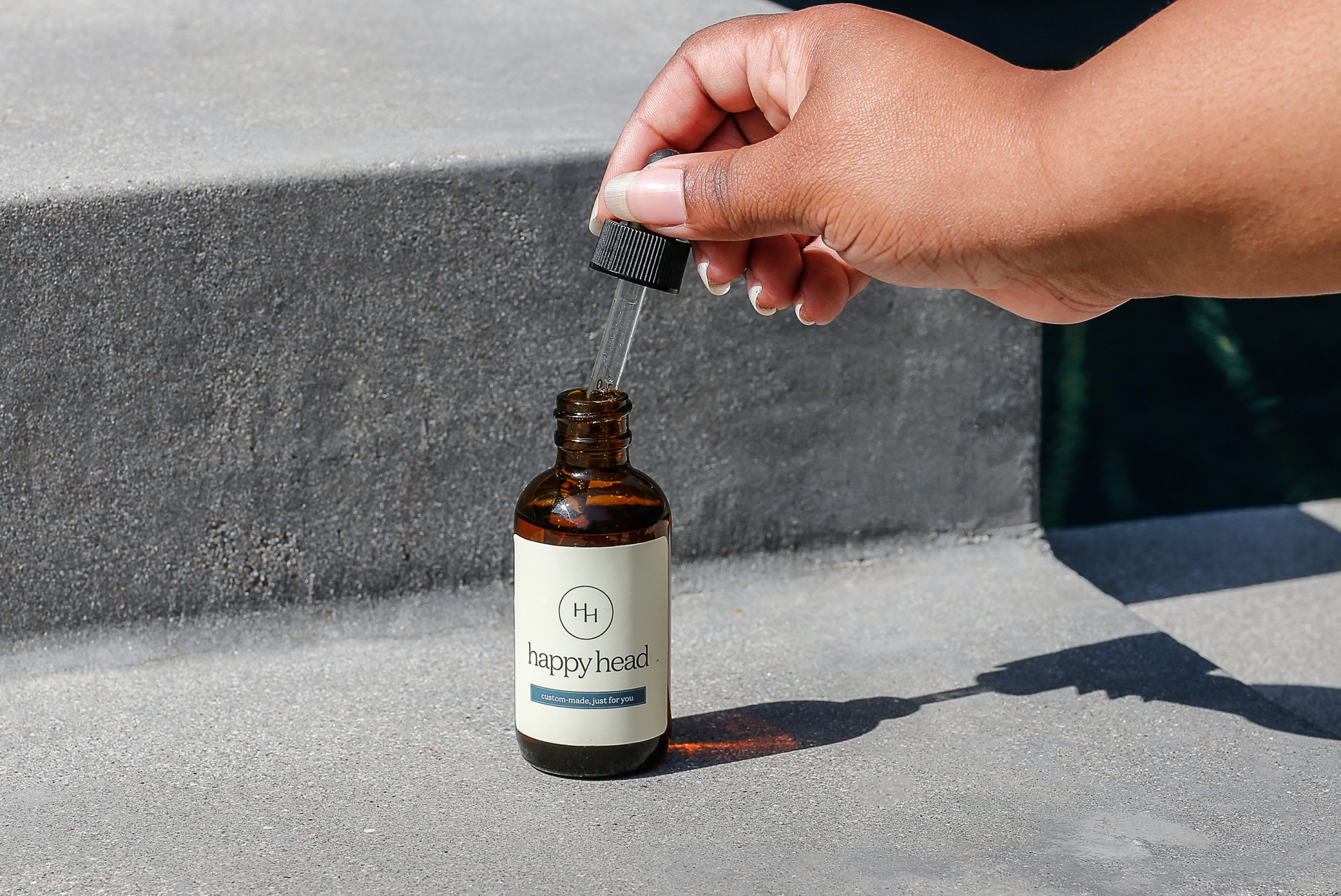Minoxidil vs Finasteride: Which Hair Loss Treatment is Best?
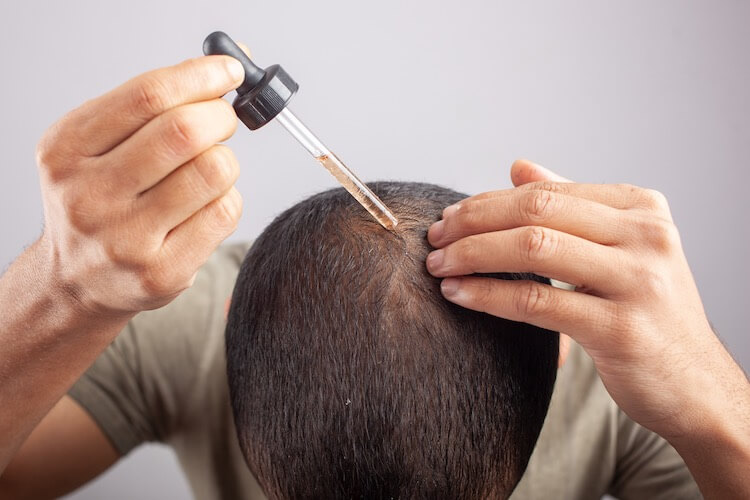
It’s not unusual for people to collect a graveyard of failed hair loss products before they throw in the towel and accept the fact that going it alone with over-the-counter (OTC) options isn’t working. We hear it all the time with our patients. After all, the OTC market for hair loss products is huge. There are vitamins, supplements, shampoos, oils, conditioners, diets, and more, all promising to help you regrow your hair. The ads are pretty convincing.
The reality is that the two products that are most effective in helping people with androgenetic alopecia (a fancy name for male and female pattern baldness) slow down the progression and regrow their hair are both FDA approved. They’re research tested and should be used under a dermatologist’s supervision. Those two products are Minoxidil (Rogaine) and Finasteride.
What exactly are Minoxidil and Finasteride? Which one should you use for your hair loss? Are there any side effects? If you’re looking for answers, you’re in the right place. We’ll give you the information you need to help you choose the most effective hair loss medication.
What is Minoxidil?
You may have heard of Minoxidil, which is sold OTC under the brand name Rogaine in two and five percent liquid and foam. Rogaine is available at retail stores such as Walgreen’s and CVS and online. Stronger Minoxidil formulas are available, but only with a doctor’s prescription. You can also get a Minoxidil custom topical treatment made by a board-certified Happy Head dermatologist.
Minoxidil was originally marketed as an oral medication to treat hypertension in the 1970s. During the product’s testing, researchers noticed that their balding patients who took Minoxidil began to regrow their hair. A topical formula was then developed and approved.
How Does Minoxidil Work?
Scientists are still learning about how and why Minoxidil works to support hair growth; however, this is what we do know. When people experience androgenetic alopecia, their hair follicles shrink, producing finer and thinner hairs over time. Minoxidil does four things to help counteract the miniaturization:
- Widens the blood vessels so more oxygen-rich blood can reach the hair follicles.
- Enlarges your hair follicles so thicker, stronger hair can grow.
- Reduces the telogen (resting) phase of the hair growth cycle, so less hair is lost
- Keeps your hair in the anagen (growth) phase longer so your hair can grow longer
Does Minoxidil Have Any Side Effects?
The most common side effect from using topical Minoxidil is mild redness or irritation. This usually goes away after using the medication for a while. If you are experiencing irritation, you can try using less of the medication or use it every other day until your skin adapts.
What is Finasteride?
Finasteride, also marketed under the brand names Propecia and Proscar, was first developed as a pill to treat Benign Prostatic Hyperplasia (BPH), also known as an enlarged prostate. Like Minoxidil, when Finasteride was being tested, researchers found that hair growth was a side effect in men experiencing hair loss. The oral medication was FDA approved to use for androgenetic alopecia in 1997 at a dose of 1 mg.
How Does Finasteride Work?
Finasteride inhibits types II and III of an enzyme called 5-alpha-reductase isoenzyme. In layman’s terms, that means it inhibits the conversion of testosterone to dihydrotestosterone (DHT). When testosterone converts to DHT, the hair’s growth cycle is interrupted. Hair follicles shrink and shorten the hair. As a result, the hair falls out easily and does not grow back. As a DHT blocker, Finasteride prevents this process from happening. Research indicates that Finasteride is highly effective. Finasteride reduces prostatic DHT levels by more than 90 percent and serum DHT levels by approximately 70 percent. Increasing the dosage does not correlate with higher serum reduction. (01)
Does Finasteride Have Any Side Effects?
It’s not uncommon for men to be concerned about taking oral Finasteride because of the medication’s reputation for sexual side effects. Finasteride can cause a decrease in sex drive or trouble getting or keeping an erection. That’s only the case for oral Finasteride, however. Topical Finasteride has been proven equally as effective without the risk of sexual side effects. (02)
What’s the Difference Between Minoxidil and Finasteride?
Minoxidil and Finasteride have two very different roles in treating androgenetic alopecia in men and women. Finasteride blocks the DHT to prevent hair loss from occurring in the first place. Because it also prevents miniaturization of the hair follicles, existing hair does not thin and new hair is able to grow. Minoxidil works at your scalp’s surface, enlarging the hair follicles.
Can You Use Minoxidil and Finasteride at the Same Time?
Because Minoxidil and Finasteride complement each other well as a treatment for androgenetic alopecia. Dermatologists often prescribe the two medications together. As a matter of fact, research has proven that not only can the medications be used together, but doing so has higher efficacy than using just one of the medications alone. (03)
Does it Matter Which Form of Medication You Use?
Both Minoxidil and Finasteride are available in oral pill and topical formulas. The medications are equally effective, regardless of whether you choose to take a pill each day or apply the topical. Many men prefer topical Finasteride over oral. As mentioned previously, the topical is equally effective for treating male pattern baldness without the same risk of side effects. Once you start using a hair loss medication, whether you use Minodixil, Finasteride, or a combination, it’s important to use the treatment daily. Once you stop, your hair loss will resume within a few weeks. Switching between oral and topical solutions should not stimulate hair loss.
How Do I Know What Dosages I Need?
Your dermatologist will prescribe the proper dosages based on your weight, recommendations from pharmaceutical companies, and experience. Even though five percent Minoxidil is marketed for men and two percent for women, many women use the five percent solution and foam. Research indicates that five percent is safe and it’s also more effective than the two percent. (04) Higher strengths of Minoxidil are available by prescription.
Which Treatment Option Should I Try First?
Since Minoxidil and Finasteride work differently, it’s a chicken and the egg kind of a question. Most dermatologists would likely recommend trying both, especially if you use topicals. All-in-one topical Minoxidil and Finasteride formulas are available if you prefer not to use multiple medications. Many people prefer the convenience of using one product.
How Do I Know if I’m a Good Candidate for Hair Loss Treatment?
The best way to get started is by scheduling an appointment with your dermatologist. However, if you don’t have one, or if you just have some questions that you would like answered, we’re here to help. Our board-certified dermatologists and hair specialists are available to review your history and recommend a personalized treatment plan. We can even customize a prescription formula to meet your specific needs.
Resources:
(01) https://www.ncbi.nlm.nih.gov/books/NBK513329/#:~:text=2%5D%5B3%5D-,Finasteride%20is%20an%20FDA%2Dapproved%20pharmacologic%20agent%20for%20treating%20benign,a%20dose%20of%205%20mg.
(02) https://www.ncbi.nlm.nih.gov/pmc/articles/PMC4314881/#:~:text=Studies%20show%20that%20topical%20finasteride,post%2D%20treatment%20with%20oral%20finasteride.
(03) https://pubmed.ncbi.nlm.nih.gov/32166351/
(04) https://jamanetwork.com/journals/jamadermatology/article-abstract/555638

